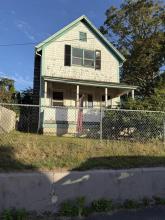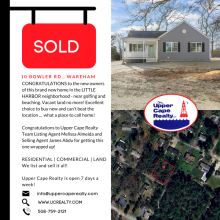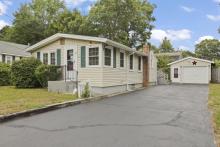Open space, natural and cultural resources mulled over for Marion Master Plan
How to maintain and encourage the use of the town's open space and recreational areas were among the concerns of residents who attended a workshop on Marion's Master Plan on Saturday, May 14.
The workshop, which addressed open space and recreation and natural and cultural resources, was the fourth in a series of opportunities for the public to share its vision for the future of Marion. Comments received will help shape the town's next Master Plan, which is scheduled to be implemented in 2017.
Master Plans cover a 10-year period and address a community's goals for land use, housing, climate change, economic development, services and facilities, transportation, open space and recreation, and natural and cultural resources. Completing a Master Plan not only ensures that town officials work from a shared vision for the community, but also makes the town eligible for various state grants.
The town has commissioned the Southeastern Regional Planning and Economic Development District (SRPEDD) for assistance in curating the information that is needed to create the plan. A group of citizen advisors and smaller advisory groups focused on specific areas (such as parks, recreation, and open space) are working with the SRPEDD representatives. The Planning Board will be charged with approving and implementing the plan, which SRPEDD Comprehensive Planner/Information Specialist Grant King noted would be "concise and actionable," with clear instructions about "who's in charge" of the various aspects of implementation -- all things stressed by the citizen advisors.
Margie Baldwin of the Marion Institute, who leads the advisory group concerned with parks, recreation, and open space, presented meeting attendees with information about those topics.
"We are an aging population ... and there is definitely a desire to spend more time outside for our health and wellbeing," she said.
The town has several groups -- town-appointed and area nonprofits -- focused on the preservation of open space. Oftentimes, she said, it's difficult to determine who has jurisdiction over various properties.
Currently, 40% of the town's land is considered open space, but not all of it is permanently protected, Baldwin said.
Albin Johnson wondered if the town has enough open space, and worried that increasing conservation land would drive real estate prices higher, making Marion unaffordable.
"What's left for the townspeople to own?" he asked. "How much more do we need?"
Betty Dunn said she'd like to see the town hire a conservation agent who could be proactive in maintaining maps and providing information and education about open space, echoing concerns many meeting-goers expressed about the difficulty in finding out which areas are open to the public and where they are located. Signage at properties was also noted as a need to be addressed.
Sally Madison worried about another group's access to open space.
"One group that hasn't been mentioned -- they aren't humans, they're dogs," she said in advocating for more properties to be open to man's best friend.
Yelena Sheynin, head steward of the Sippican Lands Trust, noted that all of its properties are dog-friendly.
"Problem solved!" joked Town Planner Ken Buckland, who led the meeting along with the SRPEDD representatives.
SRPEDD Environmental Program Director Bill Napolitano added that that is exactly the type of information that should be included and publicized in the town's Master Plan.
Sheynin also emphasized that the town and various lands trusts should work together to combat invasive plant species, such as phragmites, "before the whole town gets eaten by invasives."
Bill Saltonstall expressed concern about the town's ability to maintain its open space and recreational areas.
"It's a question of the distribution of resources, not only to buy, but to maintain the land that comes through [the town's Open Space Acquisition Commission]," he said.
John Rockwell, chair of the commission, noted that it's against the law for the commission to use its acquisition funds to pay for maintenance, and pointed out that its many "acres of woods" are not as difficult to maintain as, say, a playground. The group relies on volunteers for maintenance.
Vin Malkoski, who has spent 22 years on the town's Marine Resources Commission, noted that it is important for the town to maintain public access to the water, and hoped that could be included in the Master Plan. Boulders often appear in public rights of way, he said.
"That's something that should definitely be included," said Baldwin, noting that was something the advisory group had not considered. "I welcome your voice on our committee."
Malkoski later presented some facts about the waterways that he says are often misunderstood by the public, and should be considered as the town decides what to put in the Master Plan.
"We don't own the harbor," he said. "That's Commonwealth tideways."
The Department of Environmental Protection and Army Corps of Engineers essentially authorize the town to manage the harbor, and the DEP would step in if the town weren't managing it properly, he said.
On the topic of natural and cultural resources, Judy Rosbe of the Sippican Historical Society presented a brief history of the town. She noted that the town has a large number of historic homes, many of which "should be on the National Register [of Historic Places]," an inventory of buildings that should be preserved.
Rosbe explained that two attempts to establish historic districts in the town failed, with residents worrying that they would be subject to restrictions on what they could do to their homes if the districts were approved.
Buckland led attendees in listing off the town's various historical and cultural assets for the inventory that will be included in the Master Plan. Among the many assets shouted out were the Marion Music Hall, Natural History Museum, Marion Art Center, the Old Stone Studio, the Post Office, and General Store.
Don't forget Tabor Academy, said Tinker Saltonstall: "I would call them a significant cultural" asset.
Also included in the list were various community events, including summer concerts, Arts in the Park, and the Christmas Stroll.
Though the topics of the workshop were open space and natural and cultural resources, an overall theme of communication difficulties expressed at the meeting and throughout the overall planning process had residents wondering if there is a better way to get information -- government-related or otherwise -- out to residents.
A question from Napolitano about whether the town's website is user-friendly elicited the following shouts from the crowd: "No." "Terrible." "It's bad."
Napolitano was not surprised by the response, which he said he's been hearing throughout the Master Plan process.
"You do a lot of things people don't know about," he said, noting that a goal that could be incorporated into the Master Plan could deal with updating the town's website.
Rockwell, of the town's Open Space Acquisition Commission, concurred, saying that "a person dogging us" to supply information for the website would be helpful.
Another communication-related suggestion was for all town boards and committees to be required to present to the Board of Selectmen, whose meetings are televised, on a yearly basis.













